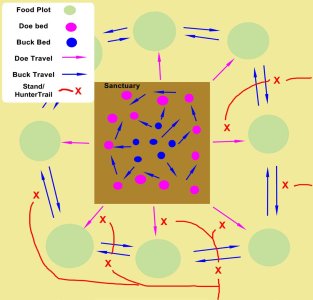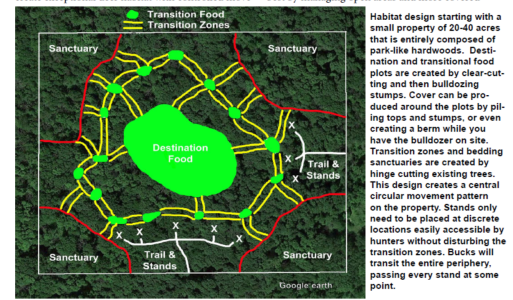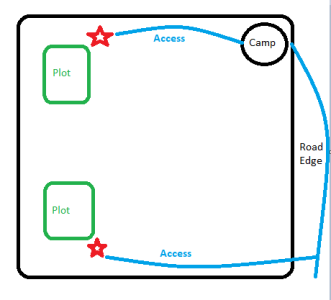Turkey Creek
5 year old buck +
I know for sure we will be putting in some small plots of varying types on the new place and am contemplating layout. Just a random thought here.... so we are bowhunters primarily in this family. So obviously being able to have deer within comfortable shooting range is a priority. Anyone ever layout food plots with your stand locations as the starting point for narrow plots that originate from it? Like the hub and spokes of a bike wheel. Thinking in my mind that perhaps if the deer are particulary focused on one food source or another would travel that plot and possibly come into range.
Other thoughts on food plot layout for archery hunting? Honestly thinking of 4 narrow plots, soybeans, corn, a greens plot (clover, brassicas, etc) and a fallow plot (weeds). Will also have a few soft mast trees in the mix and a few DCOs that we will be adding to our already existing oak population.
Other thoughts on food plot layout for archery hunting? Honestly thinking of 4 narrow plots, soybeans, corn, a greens plot (clover, brassicas, etc) and a fallow plot (weeds). Will also have a few soft mast trees in the mix and a few DCOs that we will be adding to our already existing oak population.



